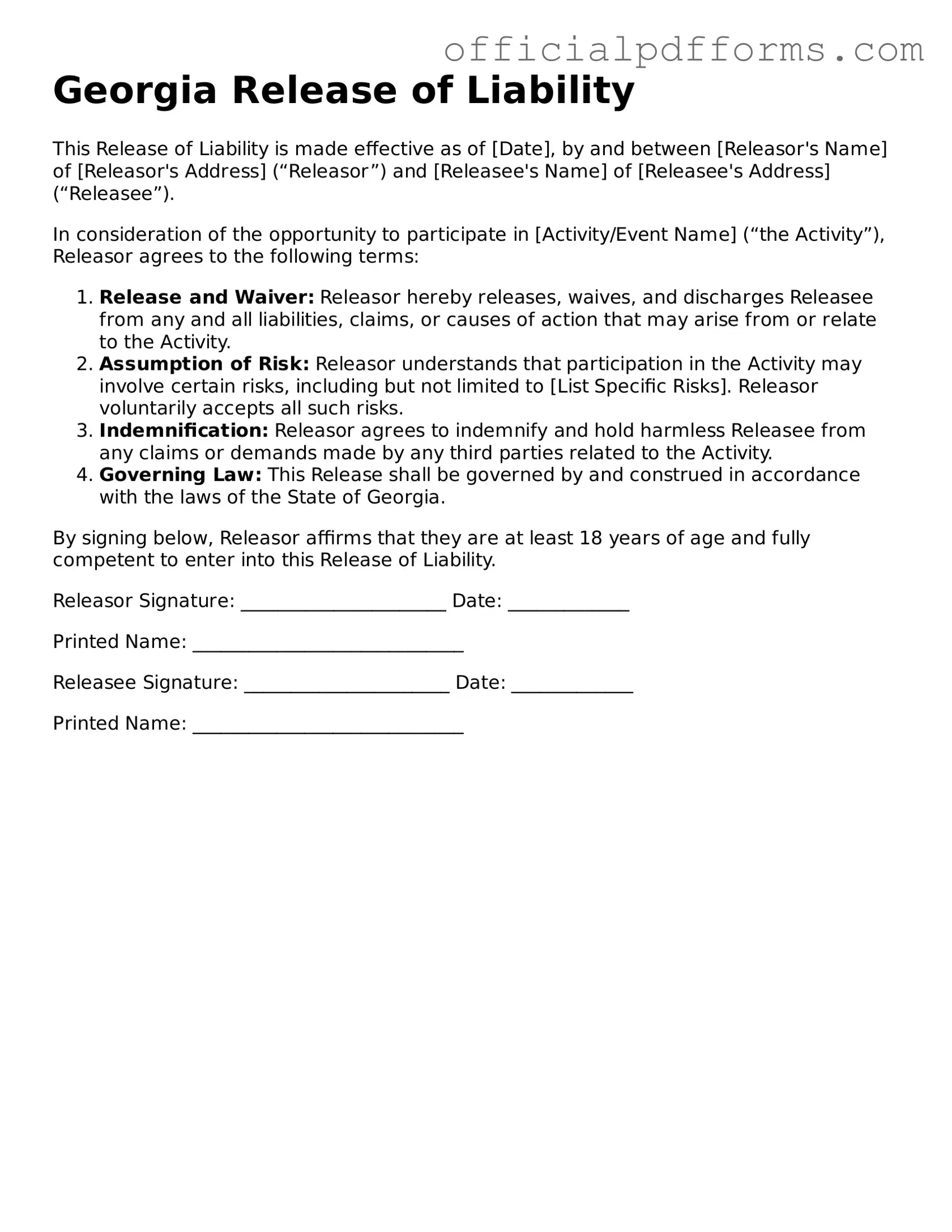A Georgia Release of Liability form is a legal document that protects one party from being held liable for injuries or damages that may occur during an activity or event. By signing this form, participants acknowledge the risks involved and agree not to hold the organizer responsible for any accidents or injuries that may arise.
This form is commonly used by businesses, organizations, or individuals who conduct activities that involve potential risks, such as sports events, recreational activities, or other events where participants may be exposed to hazards. It is important for anyone organizing such activities to consider using this form to mitigate liability.
A typical Release of Liability form includes the following components:
-
The names of the parties involved, including the organizer and participant.
-
A clear description of the activity or event.
-
A statement acknowledging the inherent risks associated with the activity.
-
A waiver of liability, where the participant agrees not to hold the organizer responsible for injuries.
-
The signature of the participant, along with the date.
Yes, a Release of Liability form can be enforceable in Georgia, provided it meets certain legal requirements. The form must be clear and unambiguous, and the participant must voluntarily sign it. Courts generally uphold these forms unless they contain unfair or misleading language.
Minors cannot legally sign a Release of Liability form on their own. Instead, a parent or legal guardian must sign on behalf of the minor. This signature indicates that the guardian understands the risks and agrees to the terms of the release for the minor participant.
What should I do if I am injured despite signing a Release of Liability?
If you sustain an injury after signing a Release of Liability form, it is crucial to seek medical attention immediately. Following that, you may want to consult with a legal professional to discuss your situation. While the form may limit liability, there are circumstances where legal action might still be possible, especially if negligence can be proven.
To enhance the validity of your Release of Liability form, consider the following steps:
-
Use clear and straightforward language.
-
Ensure that participants are fully informed of the risks involved.
-
Have the form reviewed by a legal professional to ensure compliance with Georgia law.
-
Keep a copy of the signed form for your records.
Are there any activities that cannot be covered by a Release of Liability?
Certain activities, particularly those that are illegal or inherently dangerous, may not be fully covered by a Release of Liability form. For example, activities that violate public policy or involve gross negligence may not provide protection. It is advisable to consult with a legal expert to understand the limitations of liability waivers for specific activities.
How does a Release of Liability differ from an insurance policy?
A Release of Liability form is a legal agreement that waives a participant's right to sue the organizer for injuries. In contrast, an insurance policy provides financial protection against claims and liabilities. While a release can limit legal exposure, it does not replace the need for insurance coverage, which can help manage potential financial losses from accidents or injuries.
